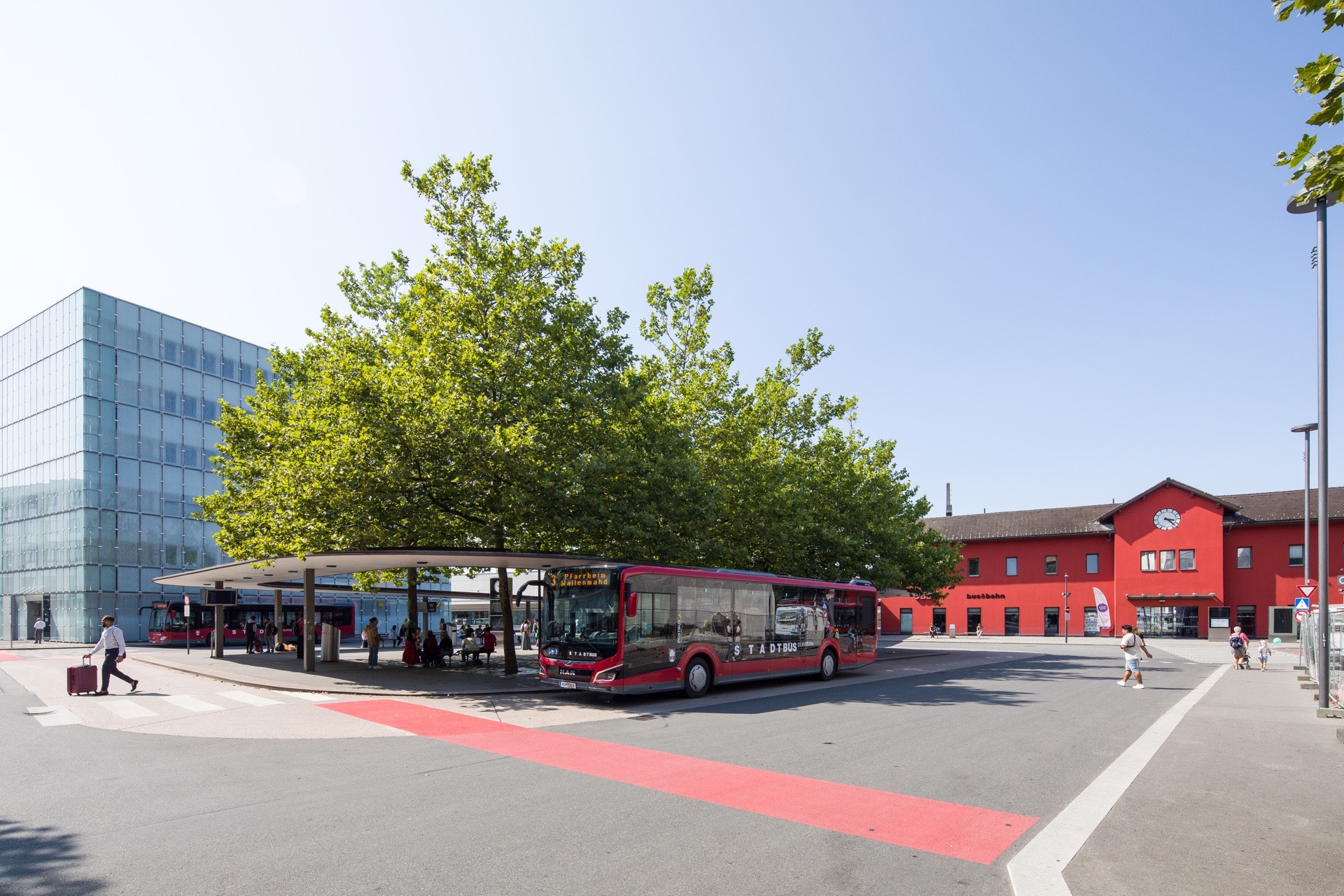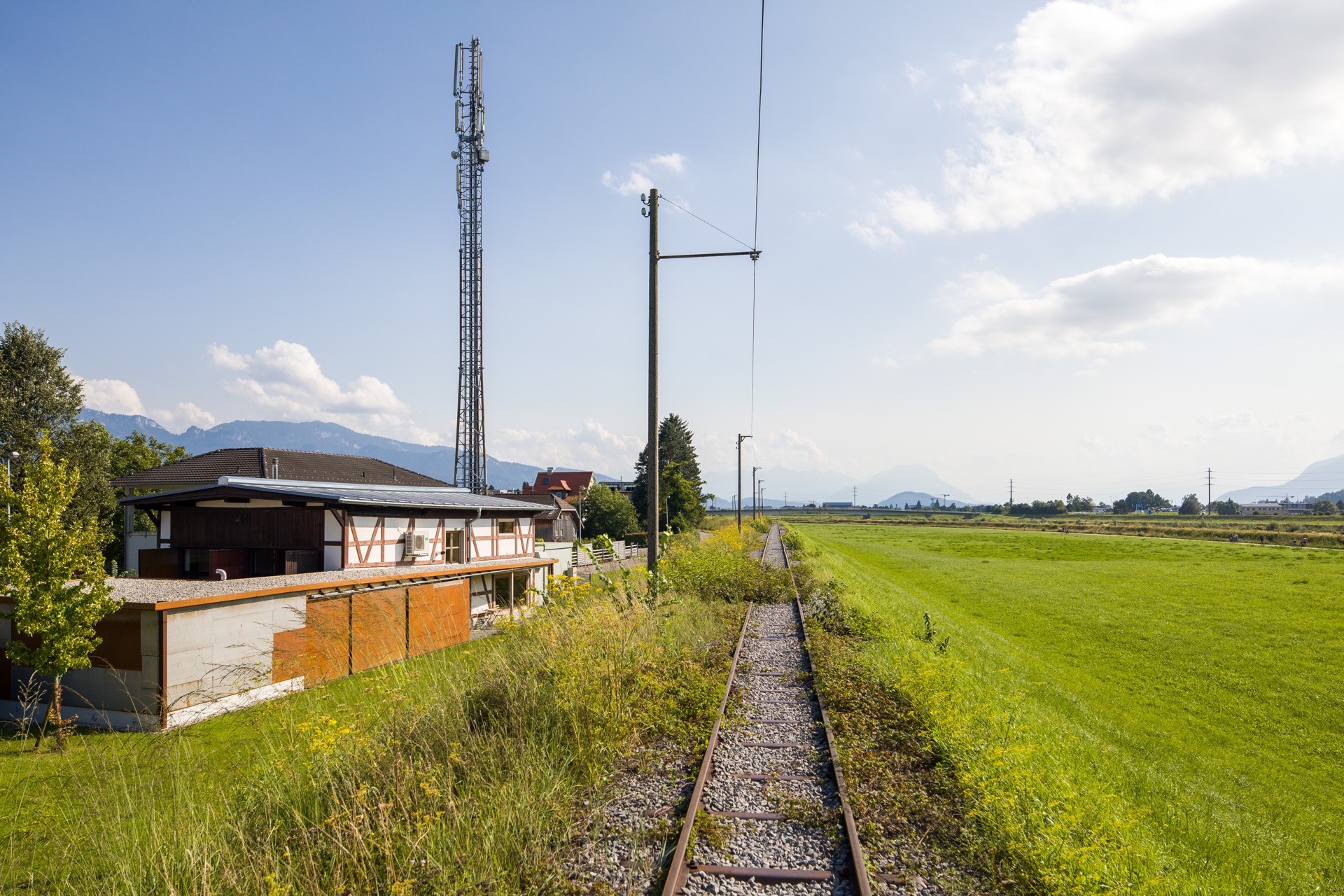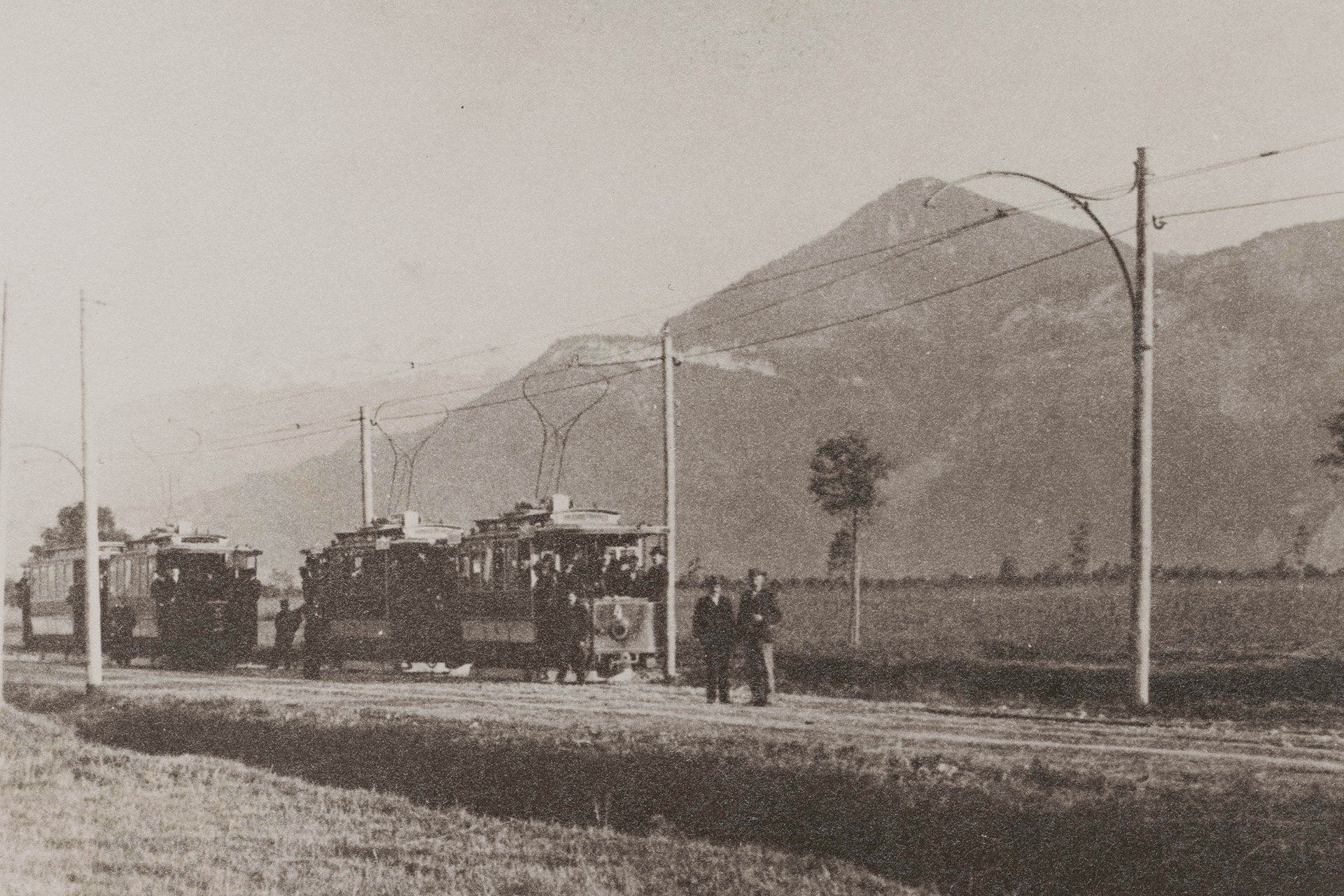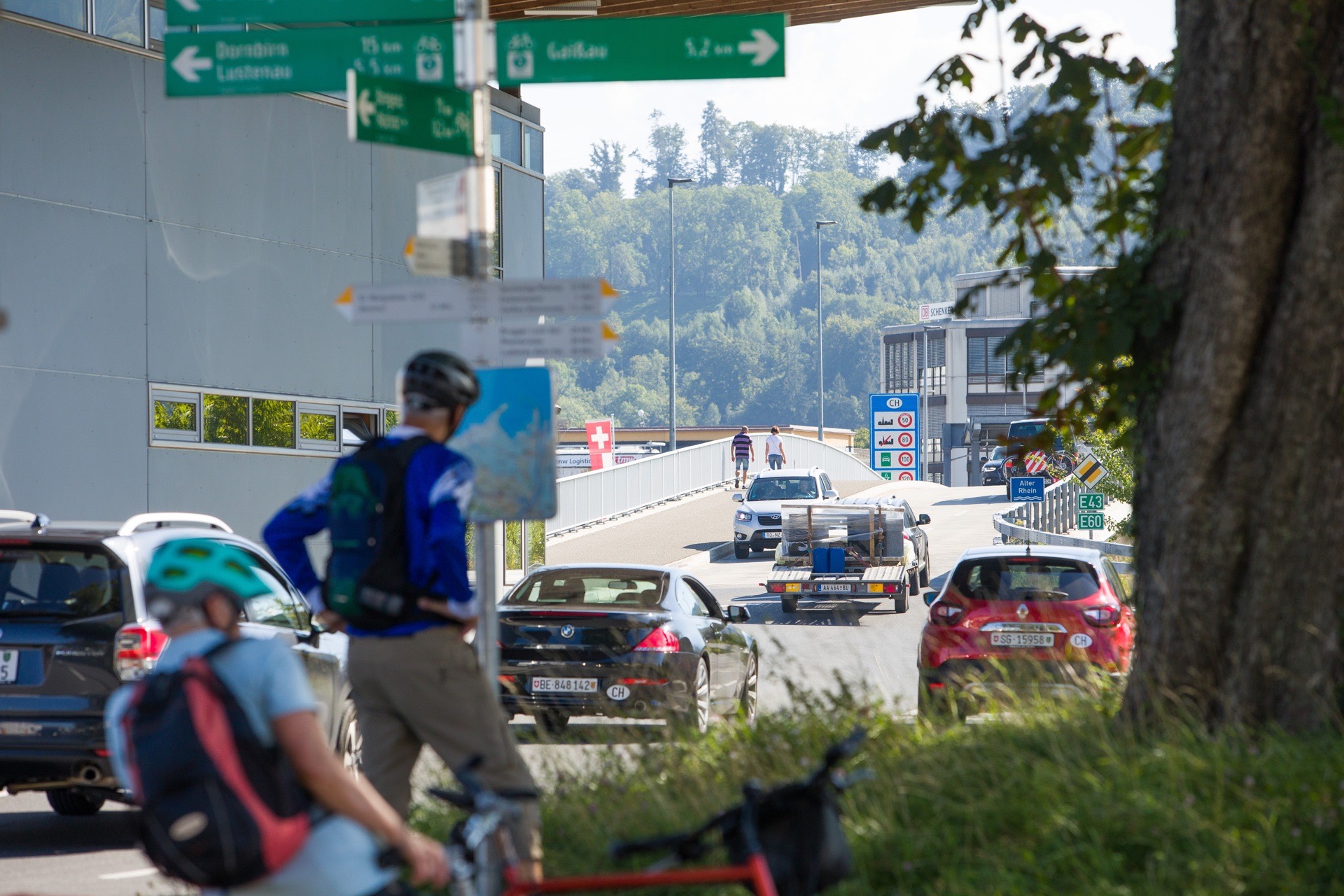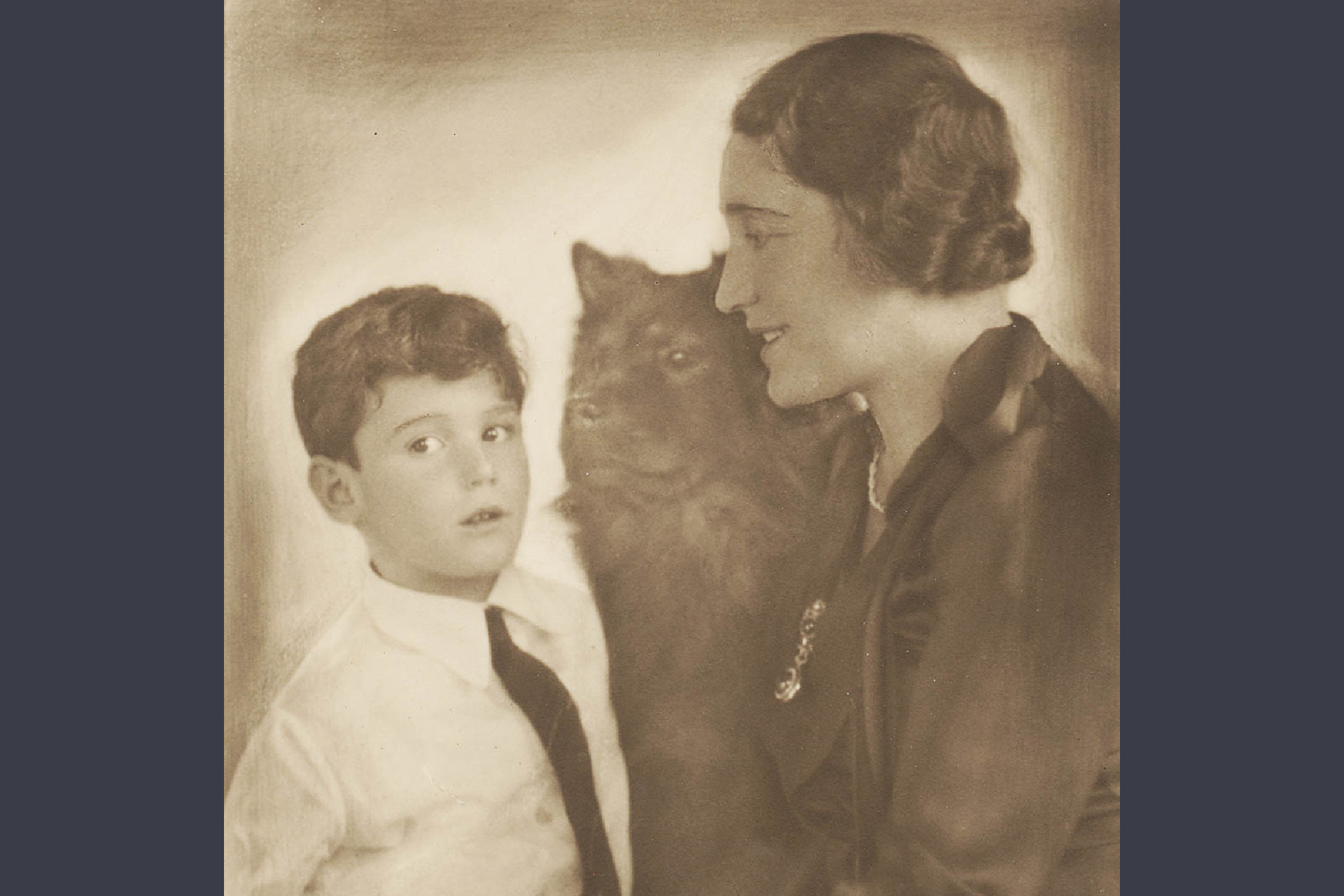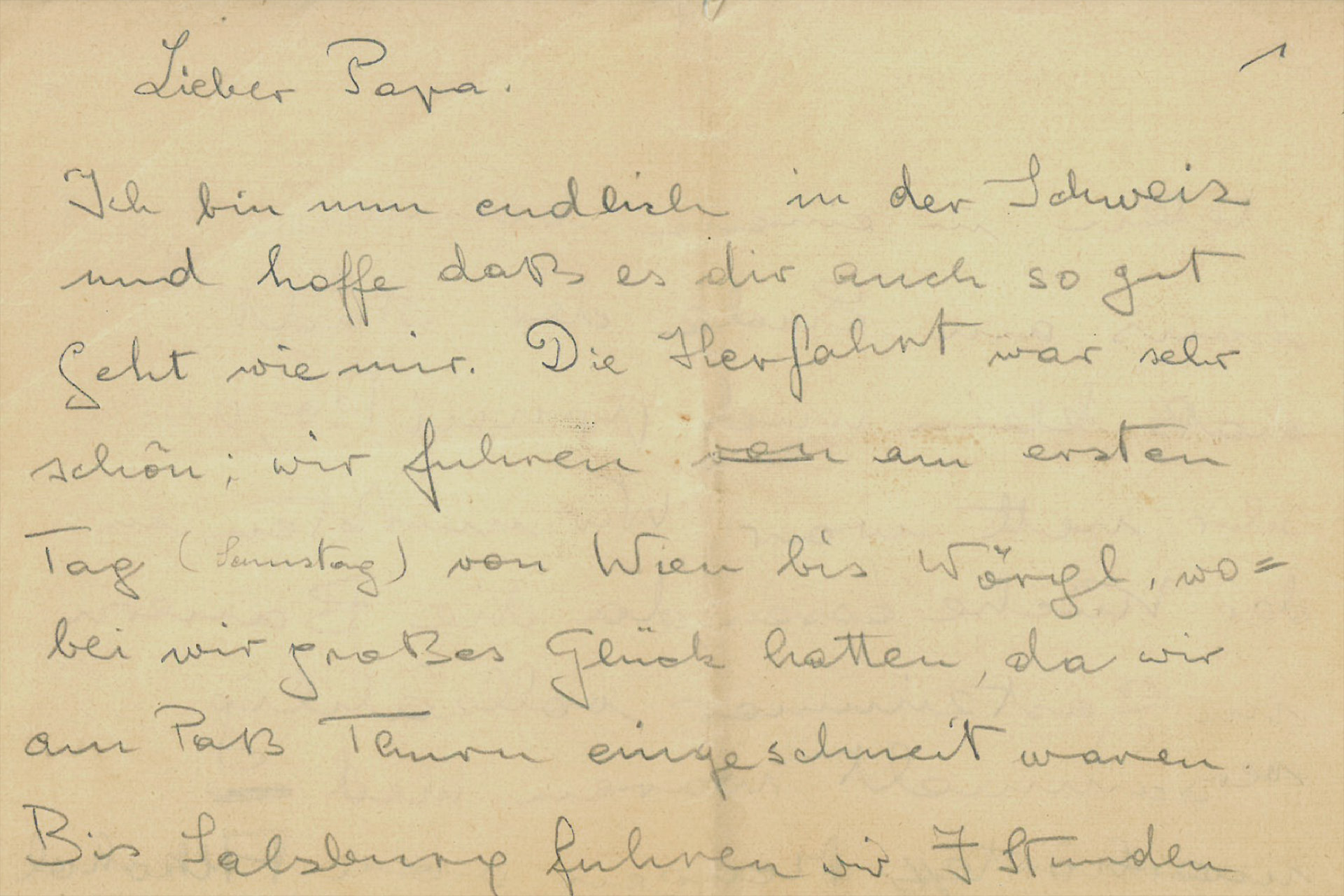Alfred Otto Munk> April 10, 1938
14 Alfred Otto Munk
A birthday adventure: the escape of Alfred and Gertrud Munk
Lustenau – Höchst, April 10, 1938
“Dear Papa,
I am finally in Switzerland and hope you are doing as well as I am.”
Alfred Otto Munk has just arrived in Zurich. It is his 13th birthday. But there is no talk of that. He writes to his father, Hans Munk, who has already emigrated to the US in 1937.
His mother, Regine Brunner, on the other hand, left for Switzerland only four weeks ago. She is from Hohenems, but Alfred Otto is probably not aware of this when he escapes across the border nearby through Lustenau and Höchst together with his sister Gertrud. Whether the light tone of the letter is meant to reassure his father or Alfred Otto Munk experienced his flight as an exciting adventure?
“The journey here was very nice: On the first day (Sunday), we drove from Vienna to Wörgl and were really in luck since we got snowed up on the Thurn Pass. For four hours until Salzburg, we drove in truly beautiful weather, however, after Salzburg, we got from one snowstorm into the next so that we were able to advance only very slowly; and getting snowed up on the Thurn Pass caused us great delay so that we reached Wörgl only at 12 o’clock. We stayed for the night on the city‘s outskirts at a little inn, which was small and simple, but very pleasant. We had to eat in the kitchen since the farmers were all assembled in the dining room and drinking incredible amounts of alcohol because, after all, for the following day (April 10: polling day) there was a drinking ban in place. The next day, we got up at 6:30 in the morning and left at 7 o‘clock. It took us two hours to reach Innsbruck; from here, we then continued to Landeck and crossed the Arlberg, which was covered in over three meters of snow and passable nonetheless; this was really fortunate since otherwise we and the car would have had to take the train, which would have cost lots of money and lots of time. In Stuben, we ate lunch and from here we continued to Dornbirn where we came upon two companions who later crossed the border with us. By tram, we went from Dornbirn to Brugg from where we walked to the border for half an hour. Gertie and I each had an entry permit as Swiss expats. Moreover, there were also two Swiss policemen with us who helped us. The border was a bridge, which on Austrian territory was occupied by SA men. Upon reaching the bridge, we presented our forged entry permits folded. Then we handed the papers to the two Swiss policemen who had them checked. They feigned drunkenness and kept stalling the border police until we had reached Swiss territory. After all, nothing could happen to them since they were Swiss. The only reason this went so smoothly was because it was polling day and so many people were crossing the border that border police didn’t carry out any strict controls. On the other side of the border, we continued driving by car to Zurich where I am now. (…) Well, I am done now, Uncle Rudi will now write.
Best regards,
Otto.“[1]
Recommended reading:
Hannes Sulzenbacher, The Brunner Family. A European-Jewish History. Hohenems-Trieste-Vienna. Hohenems 2021
Links:
A Historical Cycle Route leads to 17 historical sites in Lustenau, from the beginnings of settlement to the present day, including the remise of the electric streetcar or the escape routes along the old Rhine.
https://www.lustenau.at/de/freizeit/kultur/historisches-archiv/historischer-radrundweg
[1] Letter by Alfred Otto Munk to his father Hans Munk, Zurich, April 10, 1938; JMH Archives, Brunner collection.
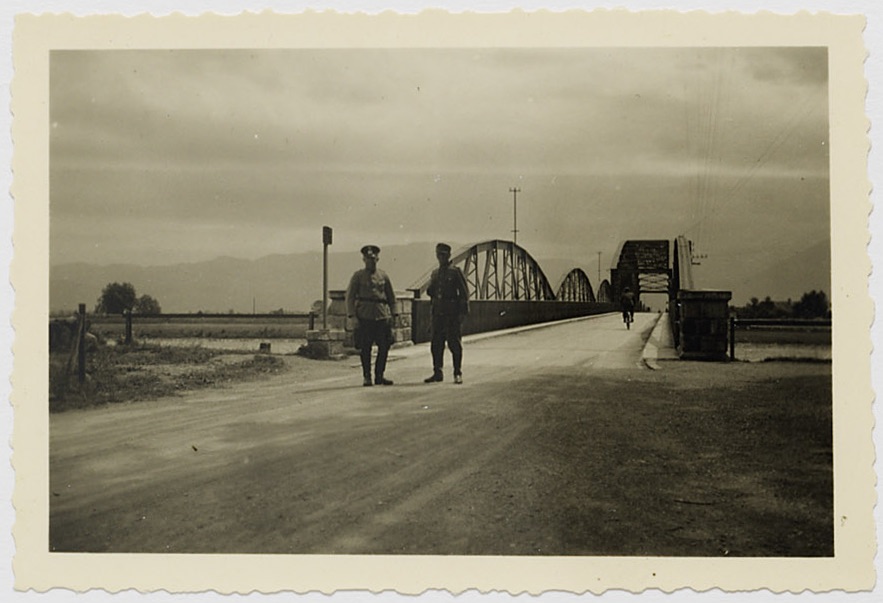
Bridge from Lustenau to Höchst around 1940, photo: Hermann Hämmerle
Historic Archive Lustenau
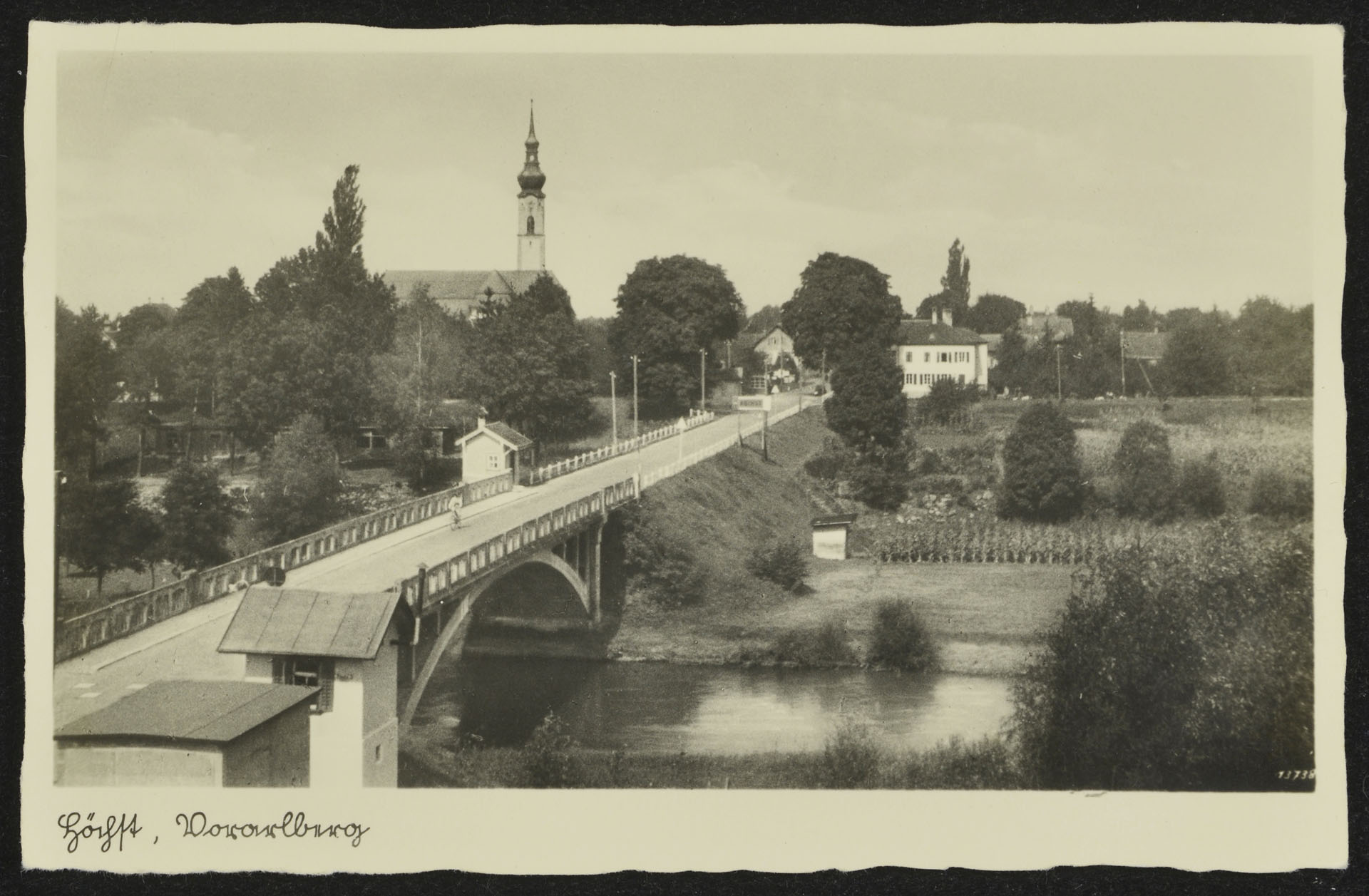
Border bridge between St. Margrethen and Höchst, before 1941, photo: Seeverlag H. Schneider
Vorarlberger Landesbibliothek
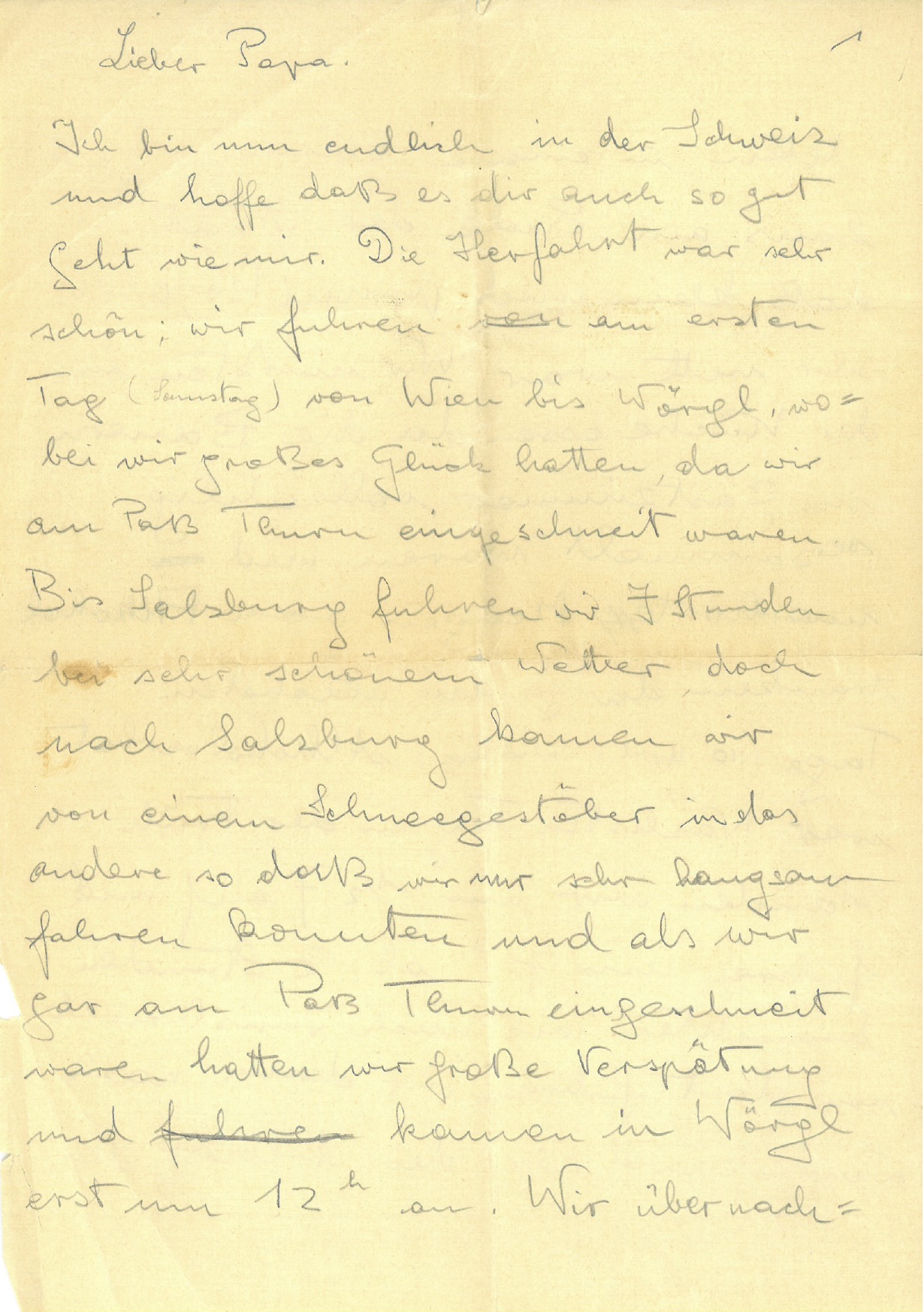
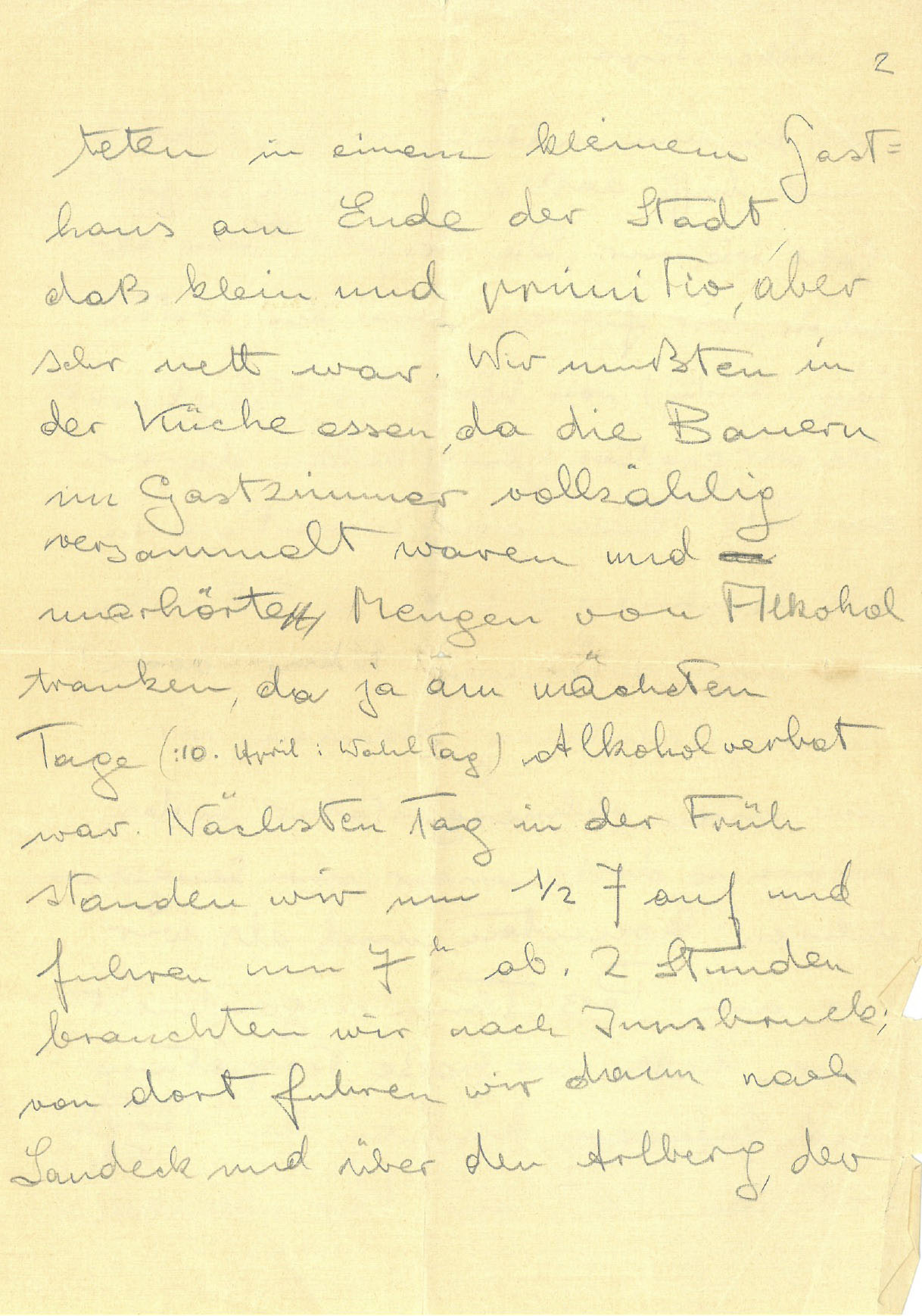

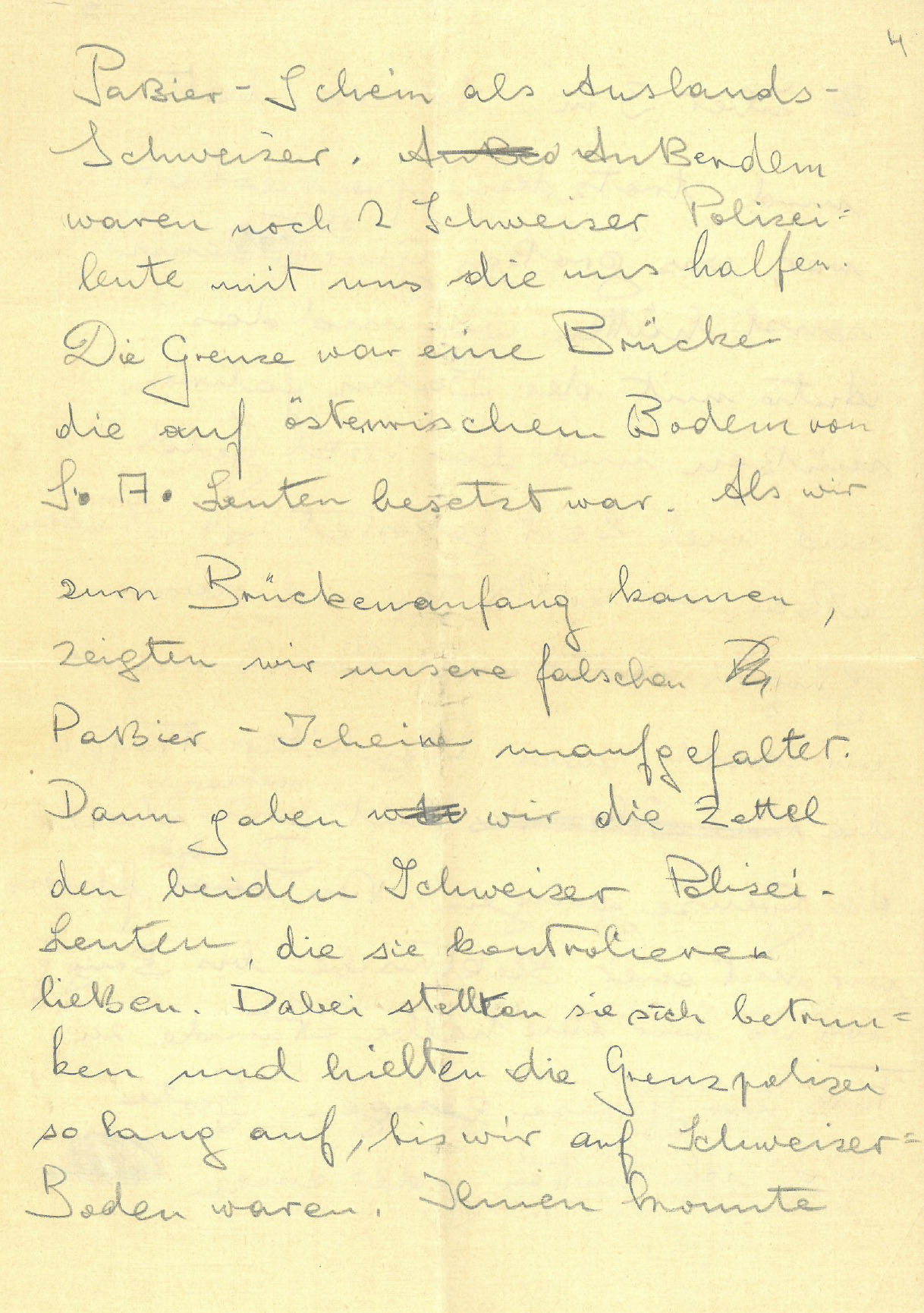
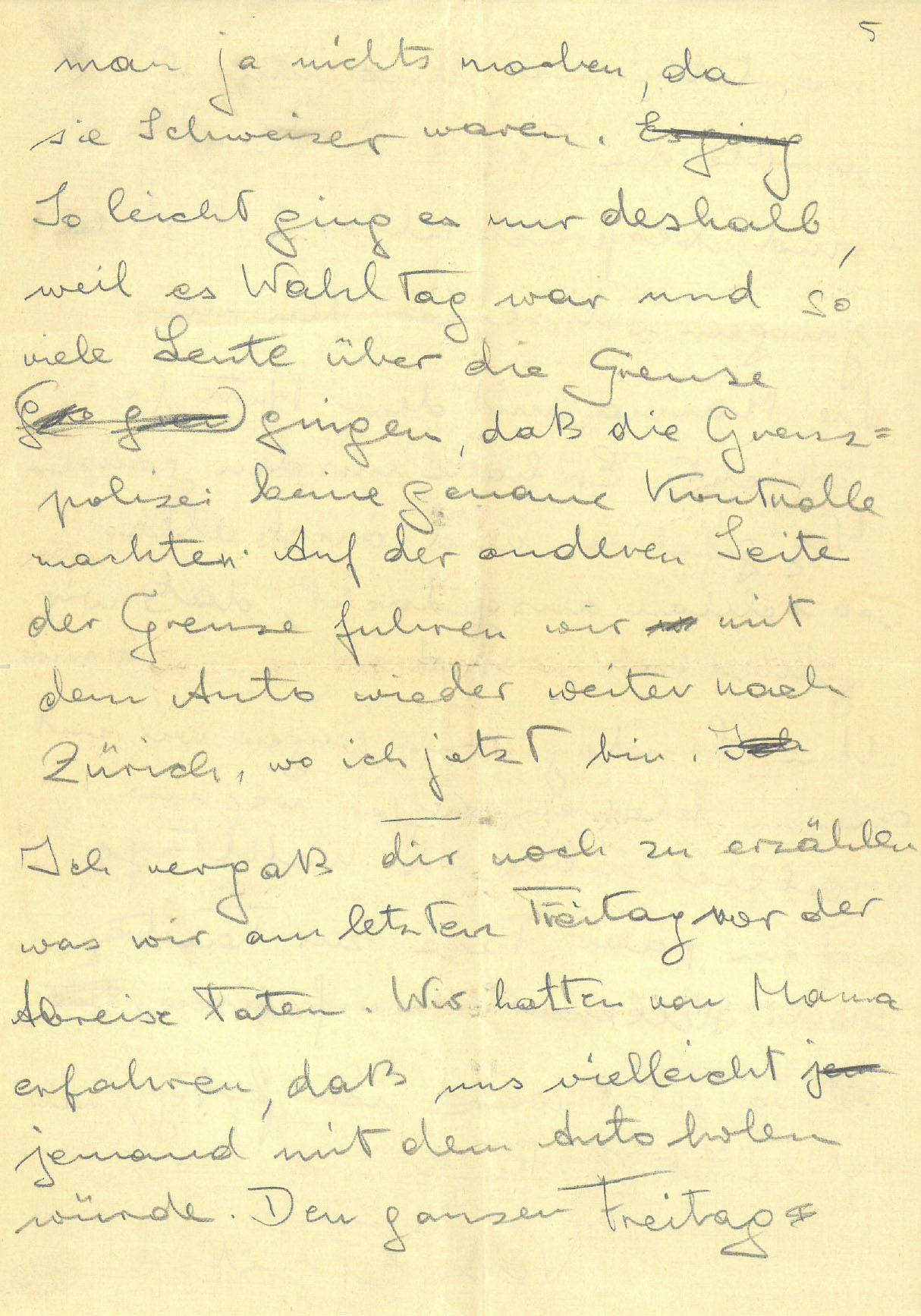
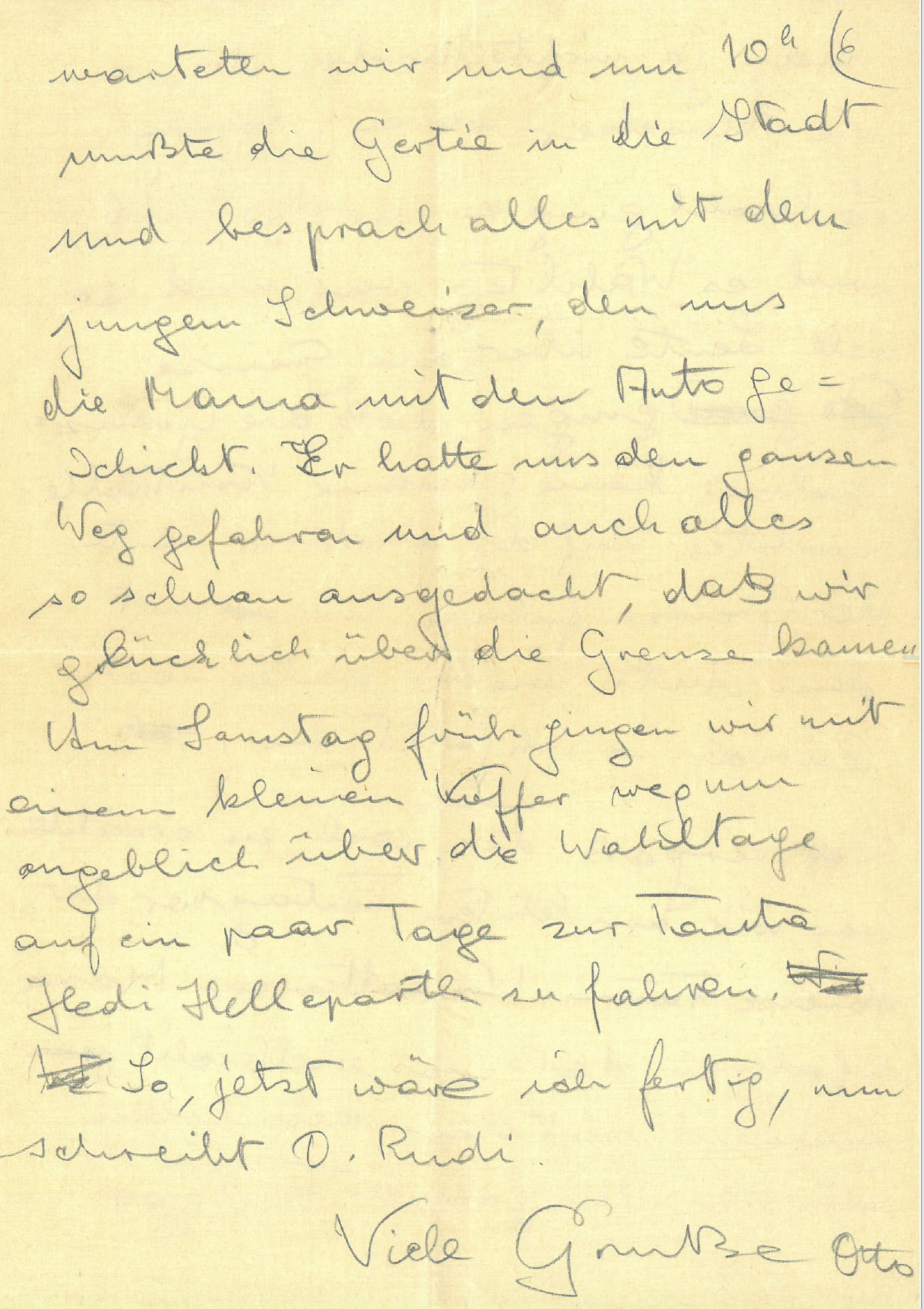
Letter from Alfred Otto Munk to his father Hans Munk, Zurich, April 11, 1938
Archive of the Jewish Museum Hohenems
14 Alfred Otto Munk
A birthday adventure: the escape of Alfred and Gertrud Munk
Lustenau – Höchst, April 10, 1938
“Dear Papa,
I am finally in Switzerland and hope you are doing as well as I am.”
Alfred Otto Munk has just arrived in Zurich. It is his 13th birthday. But there is no talk of that. He writes to his father, Hans Munk, who has already emigrated to the US in 1937.
His mother, Regine Brunner, on the other hand, left for Switzerland only four weeks ago. She is from Hohenems, but Alfred Otto is probably not aware of this when he escapes across the border nearby through Lustenau and Höchst together with his sister Gertrud. Whether the light tone of the letter is meant to reassure his father or Alfred Otto Munk experienced his flight as an exciting adventure?
“The journey here was very nice: On the first day (Sunday), we drove from Vienna to Wörgl and were really in luck since we got snowed up on the Thurn Pass. For four hours until Salzburg, we drove in truly beautiful weather, however, after Salzburg, we got from one snowstorm into the next so that we were able to advance only very slowly; and getting snowed up on the Thurn Pass caused us great delay so that we reached Wörgl only at 12 o’clock. We stayed for the night on the city‘s outskirts at a little inn, which was small and simple, but very pleasant. We had to eat in the kitchen since the farmers were all assembled in the dining room and drinking incredible amounts of alcohol because, after all, for the following day (April 10: polling day) there was a drinking ban in place. The next day, we got up at 6:30 in the morning and left at 7 o‘clock. It took us two hours to reach Innsbruck; from here, we then continued to Landeck and crossed the Arlberg, which was covered in over three meters of snow and passable nonetheless; this was really fortunate since otherwise we and the car would have had to take the train, which would have cost lots of money and lots of time. In Stuben, we ate lunch and from here we continued to Dornbirn where we came upon two companions who later crossed the border with us. By tram, we went from Dornbirn to Brugg from where we walked to the border for half an hour. Gertie and I each had an entry permit as Swiss expats. Moreover, there were also two Swiss policemen with us who helped us. The border was a bridge, which on Austrian territory was occupied by SA men. Upon reaching the bridge, we presented our forged entry permits folded. Then we handed the papers to the two Swiss policemen who had them checked. They feigned drunkenness and kept stalling the border police until we had reached Swiss territory. After all, nothing could happen to them since they were Swiss. The only reason this went so smoothly was because it was polling day and so many people were crossing the border that border police didn’t carry out any strict controls. On the other side of the border, we continued driving by car to Zurich where I am now. (…) Well, I am done now, Uncle Rudi will now write.
Best regards,
Otto.“[1]
Recommended reading:
Hannes Sulzenbacher, The Brunner Family. A European-Jewish History. Hohenems-Trieste-Vienna. Hohenems 2021
Links:
A Historical Cycle Route leads to 17 historical sites in Lustenau, from the beginnings of settlement to the present day, including the remise of the electric streetcar or the escape routes along the old Rhine.
https://www.lustenau.at/de/freizeit/kultur/historisches-archiv/historischer-radrundweg
[1] Letter by Alfred Otto Munk to his father Hans Munk, Zurich, April 10, 1938; JMH Archives, Brunner collection.

Bridge from Lustenau to Höchst around 1940, photo: Hermann Hämmerle
Historic Archive Lustenau

Border bridge between St. Margrethen and Höchst, before 1941, photo: Seeverlag H. Schneider
Vorarlberger Landesbibliothek

